SUMMARY
This is AI generated summarization, which may have errors. For context, always refer to the full article.
![[OPINION] The Bangsamoro peace process: Not taking the ceasefire for granted](https://www.rappler.com/tachyon/2022/09/bangsamoro-peace-process-ceasefire-september-13-2022.jpg)
The recent incident that resulted in the killing of two police officers in Maguindanao province serves as yet another reminder of how complicated the security landscape remains in the Bangsamoro Autonomous Region in Muslim Mindanao (BARMM). On August 30, 2022, gunmen ambushed a police team that was serving an arrest warrant against a wanted criminal in the village of Kapinpilan, in Ampatuan municipality. The attackers killed the town’s chief of police and one of his officers while wounding three others.
Two months into Ferdinand Marcos Jr.’s presidency, the deadly encounter highlights why, despite undeniable progress over the last few years, the new administration shouldn’t be complacent about the Bangsamoro peace process. The new president inherited the peace process with the Moro Islamic Liberation Front (MILF) from his predecessors Benigno Aquino III and Rodrigo Duterte, who both made strides in bringing peace to the restive Bangsamoro region. Successive governments and the former insurgents have been working together in implementing the 2014 landmark peace deal that put an end to the decades-long conflict in the Southern Philippines, with the MILF now leading the Bangsamoro Transition Authority (BTA), the region’s interim government.
In the run-up to the presidential election and even after the vote, Marcos Jr. said very little about his intentions in the Bangsamoro; his statements so far lack specific policy pronouncements or a clear vision for the region, and some of his earlier statements have generated a sense of uncertainty regarding his approach to the BARMM. A few weeks before the ambush, however, Marcos Jr. appointed a new set of BTA officials, maintaining the MILF in the lead, and the President is expected to attend the inaugural session of the BTA on September 15. But while this seems to signal that the new administration intends to put the peace process back on track, the Amputuan incident serves as a warning that it should pay close attention to developments in the Bangsamoro, as hurdles remain on the road to sustainable peace.
It is perhaps not surprising the first major security incident under Marcos’ presidency occurred in Maguindanao. While the province has been the MILF’s traditional heartland, it is also beset with heated political rivalry and clan feuding. Maguindanao’s local elections in May were the most violent of all Bangsamoro provinces. Militant groups that have refused to join the peace process also continue to operate in the province, leading to occasional flare-ups; some information suggests that the gunmen who ambushed the police belonged to a faction of the Bangsamoro Islamic Freedom Fighters, one of the MILF breakaways.
![[OPINION] The Bangsamoro peace process: Not taking the ceasefire for granted](https://img.youtube.com/vi/iHPWs7x2qdY/sddefault.jpg)
Thankfully, the peace process is advanced enough that episodes like the Ampatuan ambush do not immediately derail it. But despite the MILF’s public commitment to help the government find the perpetrators, the incident threatens to undermine the nascent relationship between the new administration and the former rebels. The Philippine National Police issued firm statements, expressing doubts over the ex-rebels’ “sincerity” in the peace process and asking MILF to hand over members who have warrants of arrest against them. Media commentary has also been trickling in, with an expected disconnect between some opinions from Manila that criticized the former rebels’ handle on security in the region they govern, and Bangsamoro views which were more nuanced, emphasizing the MILF’s commitment to the peace process.
In particular, the Ampatuan encounter raises an important question about police procedures in security operations. A key pillar of the peace process has been the ceasefire agreement between the national government and the MILF, which was signed before the peace deal. Central to the notion of the cessation of hostilities is the requirement that government forces, including the police, should inform the ex-guerillas of their actions when operating in or near MILF areas, to avoid misencounters. The ceasefire agreement fell out of the limelight following the signing of the peace agreement, as the risk of clashes logically diminished. But while the focus of the peace process has shifted to implementing the peace deal and building up the autonomous region’s institutions, it would be dangerous for the parties to neglect the importance of the ceasefire protocols and procedure while the MILF still harbors thousands of armed combatants on the ground. Although they do not make headlines, ceasefire violations still occasionally lead to the loss of lives.
Those who consider the objective of the peace deal is to reestablish the primacy and territorial sovereignty of the Philippine state believe in the need to leave the formalism of the ceasefire behind and dismantle the rebel outfit. This is, to an extent, a legitimate perspective, given that the MILF has now ventured into mainstream politics. Another view, however, emphasizes that as long as the decommissioning of the rebel movement is not finalized, a flexible approach is more effective to manage the fragile ongoing transition period. This is particularly true when taking into account the presence of other armed groups in the area, as they often operate in close proximity to MILF camps.
Does this mean government forces need to systematically coordinate with the MILF before launching police or military operations in the Bangsamoro? According to the ceasefire agreement, that essentially depends on whether the targeted location or village is a bona fide MILF community. If so, then coordination is essential, even if this may not always make sense from the perspective of ground-level military or law enforcement officials. Indeed, before Bangsamoro autonomy, on some occasions officials reported that the targets of planned raids escaped after they informed the rebels of their plans. On the other hand, some of the bloodiest misencounters happened when MILF forces were caught completely unaware of government troop movements.
Whether Kapinpilan, where the recent incident took place, is an MILF area in terms of the ceasefire agreement is up for debate; peace process adviser Carlito Galvez Jr. only said that the village had a presence of “lawless elements,” and the attackers do not appear to have been MILF members. But even if coordination in this case was not mandatory, it does not change the overall fact that the ceasefire mechanism remains a prudent protocol that is still relevant in a post-peace deal environment in which security in some areas – such as parts of Maguindanao – remains feeble. To reduce the risk of misunderstandings at ground level, sticking to the ceasefire protocols remains paramount.
Going further, the government and MILF should actually take some further steps to work toward an environment that could prevent more security incidents, including by strengthening the ceasefire.
First, both parties’ ceasefire committees need to update their list of identified MILF areas, especially after the number of MILF combatants has shrunk by almost half following the first phases of decommissioning. It is also crucial that the police, military, and other law enforcement agencies are trained on the ceasefire protocols, including members of newly deployed units. For its part, the MILF should ensure that no criminals or militants seek refuge in their recognized areas, and abstain from encroaching on areas in the vicinity of its camps, as required by the ceasefire agreement.
Second, the two parties need to discuss the problematic cases of MILF members who have outstanding warrants against them. While in the Ampatuan episode the gunmen were not part of the MILF, it is likely the police will continue to serve warrants in or near MILF areas, which could lead to tensions with the ex-rebels. It should be noted that the recent amnesty the government offered to MILF members refers only to actions “in pursuit of their political beliefs,” but specifically excludes crimes committed in a personal capacity, thus making it possible for law enforcement agencies to arrest and prosecute some of the ex-guerrillas. Both sides should discuss these delicate issues during the next meeting of their peace panels to ensure a common understanding regarding which warrants remain valid, and how to best deal with them. These discussions should take into account the fact that there have been cases in which MILF members faced trumped-up charges that had more to do with local politics than genuine breaches of the law.
Third, both sides could also strengthen ceasefire monitoring. They could, for example, agree to allow the International Monitoring Team, the official third party mandated to observe the ceasefire since 2004, to return. Earlier this year, both sides failed to agree on extending the observers’ term, and as a result, the mission pulled out at the end of June. Should both parties prefer to strengthen the ceasefire without resorting to international involvement, as seems to be the case at least on the government side, then perhaps a monitoring network comprising local observers could be helpful. There is precedence for such a system, for example with the creation of the Bantay Ceasefire grassroots monitoring network back in 2003. Such a structure could include local government representatives, religious leaders, members of civil society, and retired security officials. Yet another option could be to boost the role of the joint peacekeeping teams, established under the 2014 deal, extending their mandate to include monitoring of the ceasefire agreement, in whole or in part.
Both the ceasefire agreement and the Bangsamoro peace process more broadly have faced some difficult interludes in the past. Yet, both signs have always demonstrated a strong commitment to overcome challenges in favor of finally achieving durable peace in Mindanao. Continuing to strictly abide by – and if possible strengthen – the ceasefire amid a challenging and evolving security landscape should remain a key part of that spirit of cooperation. – Rappler.com
Georgi Engelbrecht is a senior analyst for the Philippines at the International Crisis Group, carrying out research on peace processes and conflicts, among others.
Add a comment
How does this make you feel?
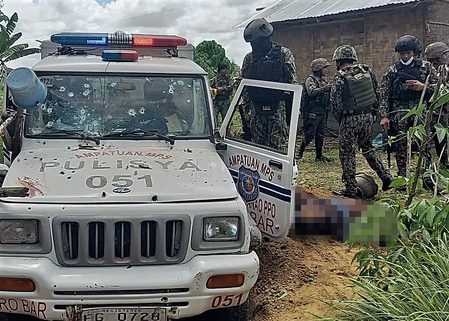





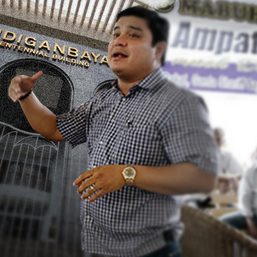

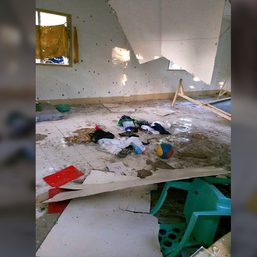
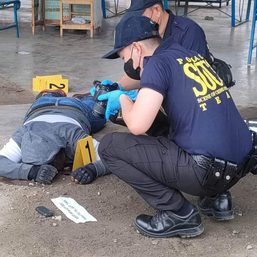
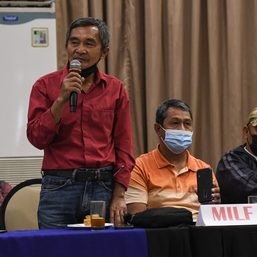





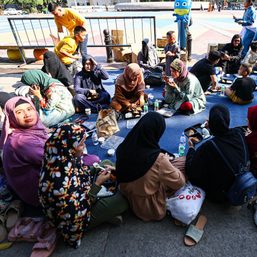
There are no comments yet. Add your comment to start the conversation.